The Navigator (1924)
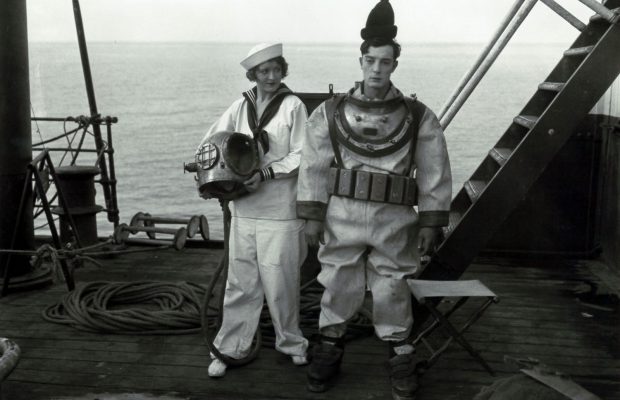
Toronto Film Society presented The Navigator (1924) on Monday, January 10, 1966 as part of the Season 18 Monday Evening Silent Film Series, Programme 3.
~~~~~~~~~~~~~~~~~~~~~~~~~~~~~~~~~~~~~~~~~~~~~~~~~~~
(Main Auditorium, UNITARIAN CHURCH, 175 St. Clair West)
Programme No. 3
Monday January 10, 1966
8:30 pm
The Ride (1963) (7 minutes)
Produced by the National Film Board of Canada
Direction: Gerald Potterton
Camera: Reg Morris
Music: Eldon Rathburn
Producer: Colin Low
Executive Producer: Tom Daly
Cast:
Rich Man – Mac Cuthbertson
Chauffeur – Gerald Potterton
(Just to prove that the art of silent comedy hasn’t died out altogether).
Last of the Line (Pride of Race) (1914) (c35 minutes)
Produced and directed by Thomas H. Ince
Featuring Sessue Hayakawa
Sessue Hayakawa is remembered in recent years as the Japanese prison commander in The Bridge on the River Kwai, but fifty years ago when he was young and handsome he was one of the more popular stars in Hollywood. His great days of stardom began with his appearance in Cecil deMille’s The Cheat (Dec 1915), but his film career had begun the year before under Thomas Ince. Casting a Japanese actor has its problems, and in this two-reel Western we find Ince trying him out as an Indian–carefully avoiding tell-tale close-ups. (For a biographical sketch of Sessue Hayakawa, see page 6).
(intermission)
The Navigator (1924) (60 minutes)
Presented by Josseph M. Schenck
Directed by Donald Crisp and Buster Keaton
Story and Scenario: Jean C. Havez, Joseph A. Mitchell, Clyde Bruckman
Photography: Elgin Lessley and yron Houck
Technical Director: Fred Gabouri
Electrician: Denver harmon
Copyright by Metro-Goldwyn Pictures Corporation: Oct 14, 1924
In 6 reels.
Cast:
Rollo Treadway – Buster Keaton
The girl – Kathryn McGuire
Her father, the shipping magnate – Frederick Vroom
Spies and cannibals – Noble Johnson, Clarence Burton, H.M. Clugston
BUSTER KEATON
You have probably heard it said that Keaton in his films represented man being constantly bedeviled by machinery, or some such high-falutin’ nonsense. Nonesense it is, because an examination of his films shows just the opposite: man’s ingenuity in using gadgets and other mechanical devices to help him cope with the world. In The General, for instance, as long as Buster is in charge of his engine he is in control of the situation; machines indeed may break down, but he is never at a loss. The only thing that taxes his ingenuity is the feminine helplessness of his frail heroine.
In The Navigator, as you will see, he is plunged into a situation of primitiveness that is utterly foreign to his experience. He proceeds to cope as best he can, and after his initial bewilderment he soon has the situation completely in hand. Keaton and machines get along very well.
To give you your money’s worth on this film, we’re going to quote Keaton’s description of a gag that was intended for The Navigator but which does not appear in the film now. The story of why it is no longer there also serves to illustsrate his conscientiousness as an artist. Keaton first told this story in an autobiography that ran in the Ladies Home Journal (I believe) some time during the latter 1920’s; but he tells it again thus in his book “My Wonderful World of Slapstick” (p174 et seq):
Another interesting thing I learned later (HE HAS BEEN DISCUSSING THE INADVISABILITY OF USING “IMPOSSIBLE” GAGS IN A FEATURE FILM, THOUGH HE HAD USED MANY IN HIS TWO-REELERS) was that once you got the audience interested in what the hero was doing they deeply resented anything that interrupted him. It didn’t matter what terrific gag you gave them.
I had this demonstrated to me some years later when we were previewing The Navigator, my biggest money-maker. I consider The Navigator and The General the two best movies I ever made. In one scene in The Navigator I was alone with the girl on a beached ship close to a cannibal-infested island.
To save her and myself, I went underwater in a diver’s outfit in a heroic effort to dislodge the ship. While working mightily, I used many gags the audience loved. (HERE KEATON DESCRIBES SOME OF THESE GAGS; BUT WE WON’T GIVE THEM AWAY BEFORE YOU’VE SEEN THE FILM).
The gag that failed was my favorite, and it cost a lot of money. After we figured it out, I had the property department construct 1,200 rubber fish each fourteen to fifteen inches long. These were suspended on thin strings the audience couldn’t see. We used a big machine that looked like a newspaper printing press to revolve them in front of the camera. The effect we got was that of a large school of fish passing by in a steady stream. One big fish came up but could not get through the school. To solve his problem I pick up a starfish that is clinging to a rock, attach it to my chest, and stand directing the piscatorial traffic like a submarine traffic cop. Holding up my hand so the big fish could get through did the trick. The stream of fish passing by stop, the big fellow crosses, then I wave to the school to go on.
In my opinion this was as good a sight gag as I ever had, and it is still my favorite. When we put it in the trailer, announcing The Navigator as a coming attraction, the audience howled. But when we previewed the whole picture at Long Beach it brought not a titter. The same thing happened when we tried The Navigator out, in theatres in Riverside and a couple of other nearby towns.
It took us a long time to figure out why that wonderful gag laid an egg. One of my gagmen, Clyde Bruckman, was so stunned that he almost took the pledge. It is always an interesting problem to me when an audience rejects any such sure-fire laugh-getter. I wonder whether it is because the customers were to concerned in figuring out the mechanics of the gag, how it is done, to be amused. Or it might be something else. In this case we showed it again in the trailer, and everybody once more liked it. That gave me an answer that satisfied me. The other gags were accepted by audiences who saw the whole picture, because they did not interfere with my job of saving the girl. But when I directed the submarine trafffice I was interrupting the rescue to do something else that couldn’t help us out of the jam.
I threw the gag out. There was nothing else to do. Some of my co-workers thought the gag flopped because it was too intricate. But I still believe it fell dead because it showed the hero interrupting the job of saving himself and the girl.
From that day on, I realized that my feature comedies would succeed best when the audience took the polot seriously enough to root for me as I indomitably worked my way out of mounting perils.
Keaton’s diagnosis is obviously right; but we venture to believe that another cause of the gag’s failure was the fact that it was also an “impossible” gag in the context of a possible (however improbable) situation. One of the other gags in this underwater sequence which he left in (we won’t spoil it for you by pointing it out) is similarly out of character.
(One more comment on Keaton: Good looks are so unnecessary in a comedian that even their presence often goes unnoticed. Has it ever occurred to you what a matinee idol Keaton would have been if he had exploited his handsome face and beautiful eyes instead of his gift for wild comedy?)
BUSTER KEATON was born in Pickway, Kansas, on October 4, 1895. It could have been anywhere else, for his parents were in a travelling medicine show, and Pickway, Kansas, was just where they happened to be. His mother was born into show business; his father, a farmer by birth, acquired it both by inclination and by marriage. When the baby was six months old he fell down stairs and was picked up not much the worse for it, whereupon his father’s then partner, Harry Houdini, remarked “That’s some indestructible buster you’ve got there!” or words to that effect, and the nickname was given to the baby and he was never called anything else. (In his autobiography he doesn’t tell us what his real name was; but his father, grandfather and great-grandfather had all been named Joseph, so probably he was so christened too). He seems to have been the first “Buster”; the Buster Brown comic strip which was to popularize the name didn’t begin until a few years later.
Buster’s indestructibility led to his first career. As a baby he had been parked in the wings while his parents were onstage; it was easier than finding a baby sitter; but as he grew older they found the best way to keep their eye on him was to let him on the stage when them. When it was discovered that the boy didn’t mind being dropped or knocked about (thought it was fun, in fact) and that audiences loved it (there must be a W.C. Fields in all of us), this became the nature of the family vaudeville act, officially billed as The Three Keatons, with Buster featured as The Human Mop. (When he grew big enough they threw each other around). In his sixteen year with this act, one of the roughest and rowdiest in the whole vaudeville circuit, Buster missed only one performance through injury sustained in the line of duty. With this training it is little wonder he could do all those fantastic falls in his films. (Watch for several examples in The Navigator, all of them casual throw-away gags to which you hardly give a thought).
Another thing the boy learned early was that if he smiled or looked as if he were enjoying himself, he didn’t get nearly as many laughs as if he looked miserable and bewildered. He quickly acquired the habit of performing with an unsmiling countenance–a habit which he unintentionally took into films with him.
The Keatons’ vaudeville act (which eventually reached “big time”, playing the Palace in New York) lasted till 1916, by which time Buster decided to go out on his own. He returned to New York and had little trouble landing a job in The Passing Show of 1917; but shortly before rehearsals were due to begin, he ran into an old friend who introduced him to his companion, Roscoe Arbuckle, who had recently left Mack Sennett and was making two-reel comedies on his own, with Joseph Schenck as producer, at the Colony Studios in New York. Arbuckle and Keaton had already admired one another professionally, so on this their first social meeting, Arbuckle invited Buster to come around to the studio the next day and watch his work, and perhaps even play a bit part. Keaton did so (the picture was The Butcher Boy), and liked the work so much that he begged out of his Passing Show contract (at $250 a week) to work for Arbuckle at $40 a week.
(It was here, by the way, that he met his first wife, Natalie Talmadge, the sister of Norma and Constance. Buster talks about her with subdued bitterness in his autobiography, but tactfully avoids naming or identifying her. But it was never any secret at the time).
Soon afterwards the company moved to Hollywood, but in June 1918 he was drafted into the Army and didn’t resume his movie career until he was demobbed the following year. He immediately returned to Hollywood and went back to work for Joseph Schenck (who, being Norma Talmadge’s husband, was soon to become Keaton’s brother-in-law), and made a few more two-reelers with Arbuckle before the latter moved to Famous Players-Lasky to make features. (Speaking of Arbuckle, those of you who have read “Hollywood Babylon” should read Keaton’s book as a corrective; Keaton, after all, knew Arbuckle personally as young Kenneth Anger did not).
In 1921 Keaton made a single feature for Metro (The Saphead, based on the same play that had served for Douglas Fairbanks’ screen debut in 1915), after which Schenck bought him the old Chaplin studios, turned over to him Arbucke’s former production crew, and let him make his own films with little or no interference from himself–insisting, however, that Buster stick to two-reelers. The first eight of these were released by Metro; then Schenck made a deal for 12 two-reelers to be released by First National.
Only after that did he make features, for release by Metro: Three Ages (Sept 1923), Our Hospitality (Nov 1923), Sherlock Jr (March 1924), The Navigator (Oct 1924), Seven Chances (March 1925), Go West (Nov 1925) and Battling Butler (Aug 1926). (It was during this period that Metro became Metro-Goldwyn and then finally Metro-Goldwyn-Mayer).
In 1926 Schenck became one of the chief executives of United Artists, and brought along with him the whole Talmadge clan, including Keaton who made three features: The General (Feb 1927), College (Sept 1927) and Steamboat Bill Jr (May 1928).
In 1928 Schenck talked Keaton (against his better judgement) into abandoning his own studio and going to work at the M-G-M studios. Keaton, who calls this the biggest mistake of his life, probably didn’t have much choice; one gathers, reading between his lines, that Schenck had already sold them his contract with Keaton. Hitherto Keaton had always worked with his own unit, with no outside interference, in the semi-improvisational manner of most of the silent film comedians; but M-G-M (meaning mostly Irving Thalberg) insisted on written scripts (something Keaton had never had) and in general trying to make him conform to the system. Furthermore, his key men who had come with him were always being seconded to other pictures. Only the first film for M-G-M, The Cameraman (Sept 1928), was made under Keaton’s own control.
It was this fact that sent Keaton’s career into gradual (not sudden) decline. That talkies came along just then was only a coincidence, not a cause. There is a persistent legend that talkies dealt a death blow to all the great comedians of the Silent Era; but the facts are against it. Chaplin successfully igorned talkies and didn’t lose his popularity until he abandoned his Tramp character. Harold Lloyd produced successful films all through the thirties, some as good as he ever made. Laurel and Hardy did even better in sound films than in silent. As for Harry Langdon, he was already a spent skyrocket before talkies arrived. Admittedly Raymond Griffith was a casualty, but only because he had no voice (literally). Some comedians did collapse under the advent of sound, but not the great ones; and the percentage was no higher than that of straight actors, and may well have been much lower.
Keaton’s first talking picture, Free and Easy (1930), was one of M-G-M’s biggest moneymakers that year; obviously the public found no fault with a talking Keaton. It was the rot that had set in two years earlier, when he gave up his own studios and his control over his films that was the undoing of Keaton; not talking pictures.
Increasingly unhappy working conditions plus an increasingly unhappy domestic situation (his wife divorced him in 1932 and received most of his accumulated wealth in settlement) resulted in his increasingly seeking consolation int he bottle. (We’re not betraying secrets; Keaton tells the whole unhappy story in his book). At last, in 1933, Louis B. Mayer fired him for refusing to obey an order, and the other major studios, closing ranks, declined to touch him. (One might guess from this that Keaton’s box-office value had become nil; perhaps it had–but it doesn’t necessarily follow. Vanity and the exercise of autocratic power seems to have ranked higher with Mayer than financial profit, and a nose was not necessarily too high a price to spite his face. Suspicion persists that he deliberately sabotaged the career of John Gilbert).
At any rate, the next two years were the worst in Keaton’s life as he made futile films abroad and drank himself further and further down, and also made another short and disastrous marriage.
The nadir was reached in 1935; then suddenly he stopped drinking for five whole years, and settled down to making cheap two-reelers for Columbia. In 1940 he married for the third time, this time successfully, and left Columbia to take a job as a gag writer for $100 a week at M-G-M, the studio which seven years before had been paying him $3000 a week. His wages increased as the company appreciated his contributions, and he also did the occasional acting role. In 1947 a big circus in Paris had him as a guest star for a four-week engagement.
In December 1949 a Los Angeles television station signed him up for a weekly series which, though it was seen only locally, became extremely popular, and was the real beginning of the upswing in his fortunes. He has been increasingly in demand ever since for films, personal appearances, television programs and other activities in many parts of the world (including Canada). Today he and his wife live comfortably in their own home in San Fernando Valley, with more than enough work to keep him constantly busy and happy. In 1960 Doubleday published his autobiography, “My Wonderful World of Slapstick” (from which we have drawn most of the foregoing material).
A new generation knows and loves the present-day Buster Keaton, and is also discovering the young Buster Keaton of his best silent films as they are becoming increasingly available again. Indeed, there is a tendency now to claim that Keaton was a better comedian than Chaplin. Using Keaton as a stick to beat Chaplin is not fair to either artist, but it is at least indicative of the universal esteem and affection that has belatedly returned to him. Buster was 70 last October. He says he intends to live to be a hundred; and we sincerely hope he will.
(How pleasant it is to write a biography of a silent screen star that has such a happy ending!)
SESSUE HAYAKAWA
At this writing we haven’t yet seen Last of the Line, but we very much doubt that it could be half as interesting as Hayakawa’s own life story.
He was born on June 10, 1890, in the Nanaura township of Chiba province in Honshu, Japan. His name then was Kintaro Hayakawa. He came from a good family, and he was educated for the Navy; but when he was 18 an illness caused by an infected eardrum caused him to be rejected by the Naval Academy. In shame over this, he tried to commit harakiri and nearly succeeded. When he recovered from this injury he retired to an abandoned temple to practice solitary meditation, and became seriously interested in Zen Buddhism.
But in May 1909 an American ship was wrecked on the shoals nearby, and young Hayakawa assisted in the rescue of the passengers. This fortuitous meeting with Americans aroused his interest in the United States and made him want to visit that country. He succeeded in talking his father into permitting him to attend the University of Chicago to study Political Science. Here he also became a member of the football team–till his use of judo on the playing field led to his expulsion.
He graduated in 1913 and set off for home; but he only got as far as Los Angeles. Here he happened to attend a performance by a local Japanese Theatre which was apparently so poor that he expressed the opinion that he could have done it better himself. They called his bluff and let him try; so instead of going back to Japan he joined the company and found himself directing and acting in plays for this Japanese Theatre. (It was then that he changed his first name to Sessue).
In 1914 he staged an English adaptation of a play called “Typhoon”, and this was seen and admired by Thomas Ince, who promptly signed Hayakawa to play the same role in the film version of it. Hayakawa made several films for Ince; then signed up with the Jesse Lasky Feature Play Company (1915). His first film, The Cheat, with Fanny Ward, was highly successful (and is still a great film, according to those who have seen it recently), and Sessue Hayakawa was soon a very popular star.
Hayakawa’s films for Lasky were:
1916: Alien Souls; The Victorian Cross; The Clue
1917: The Bottle Imp; Each to his Kind; The Jaguar’s Claws; Forbidden Paths; His Honorable Friend; Hashimura Togo; The City of Dim Faces; The Soul of Kura san
1918: The Secret Game; The Honor of his House; The Call of the East; Hidden Pearls; The Bravest Way.
(We don’t guarantee this list is complete).
In March 1918 he formed his own company, Hawarth Pictures Corporation, and in the next four years he made 23 films. In the meantime he was living it up in Hollywood, where he and his wife owned a luxurious mansion and gave lavish parties on a grand scale.
His last film (of this period) was The Vermilion Pencil (1922). During the filming of it an attempt was (allegedly) made on his life by a motion picture executive who stood to gain from the insurance money; and in March, 1922, the Hayakawas left Hollywood. (His popularity had run out by then, anyhow. That he was popular at all in an era that regarded Valentino as “too foreign” speaks well for his appeal; but public prejudice would still not have tolerated his marrying the girl in the end, except when (as occasionally happened) she was Japanese too. Frustrated fans grew tired of his never getting the girl, and eventually stayed away from his films; or such, at any rate, is one theory that we propounded not long afterwards to account for the demise of his screen popularity).
But if he was through as a Hollywood star, he was not at all through as a successful actor. he resumed his stage career, on both sides of the Atlantic, and also appeared in European films. In 1931 he came back to Paramount briefly for his first talking picture, Daughter of the Dragon, and in the thirties he extended his activities to his native land. He was back in Paris when World War II broke out, and he remained there for the duration, making a living by painting watercolors on silk. In 1947 he was a judge in the Venice Film Festival. He did roles in two Hollywood films: Tokyo Joe (1949) and Three Came Home (1950), then returned to Japan for the first time since 1937.
He had never relinquished the adherence to Zen Buddhism which had begun when he was 18, and in the early 1950’s he was finally ordained a Zen Buddhist priest. This neither curbs his film activities nor his enjoyment of luxurious living. He lives in Japan now, where he owns a dramatic school, and he is apparently quite well-to-do. He returned to the United States in 1956 for his most memorable screen role since The Cheat: the Japanese prison commander in the The Bridge on the River Kwai. This was followed by roles in Geisha Boy (1958) and Green Mansions (1959). In 1958 came a prominent TV play: The Sea is Boiling Hot, and he also appeared in the (unsuccessful) Broadway adaptation of it: “Kataki”.
In 1960 (like Keaton) he published his autobiography, “Zen Showed Me the Way”, but we confess we haven’t read it yet. (The foregoing notes were culled from the 1962 edition of Current Biography). There was an interview with him published in the Toronto Telegram not so long ago.
Once again it is a pleasure to write a film biography without a tragic ending.
Notes by Fraser Macdonald
~~~~~~~~~~~~~~~~~~~~~~~~~~~~~~~~~~~~~~~~~~~~~~~~~~~~~~~~~~~~~~~~~~~~~~~~~~~~~
OUR NEXT ATTRACTION: Monday February 21, 1966:
Pola Negri and Emil Jannings in Passion (DuBarry) directed by Ernst Lubitsch (1919)

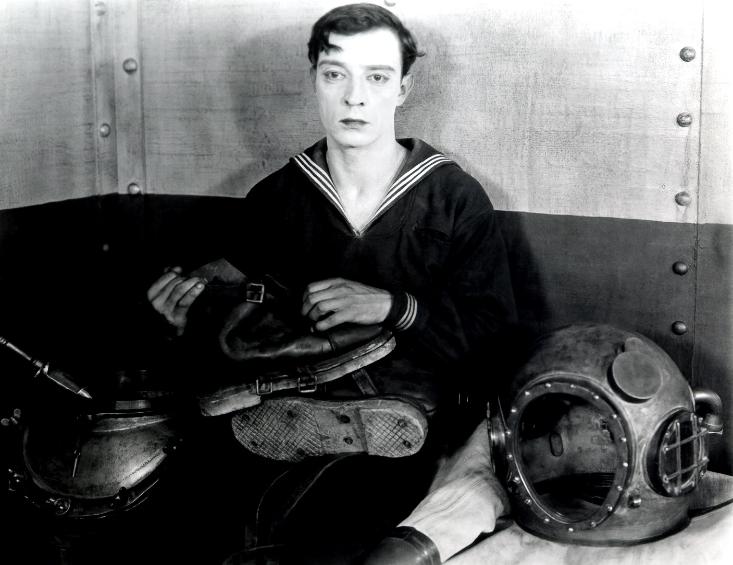
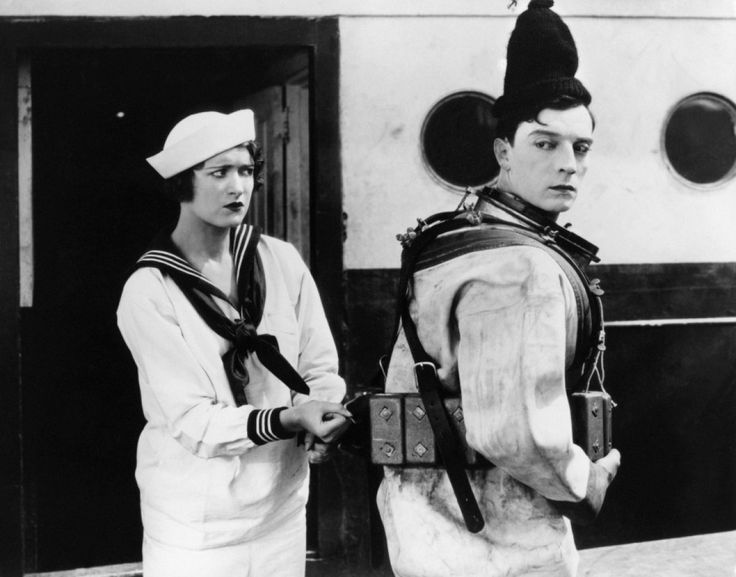
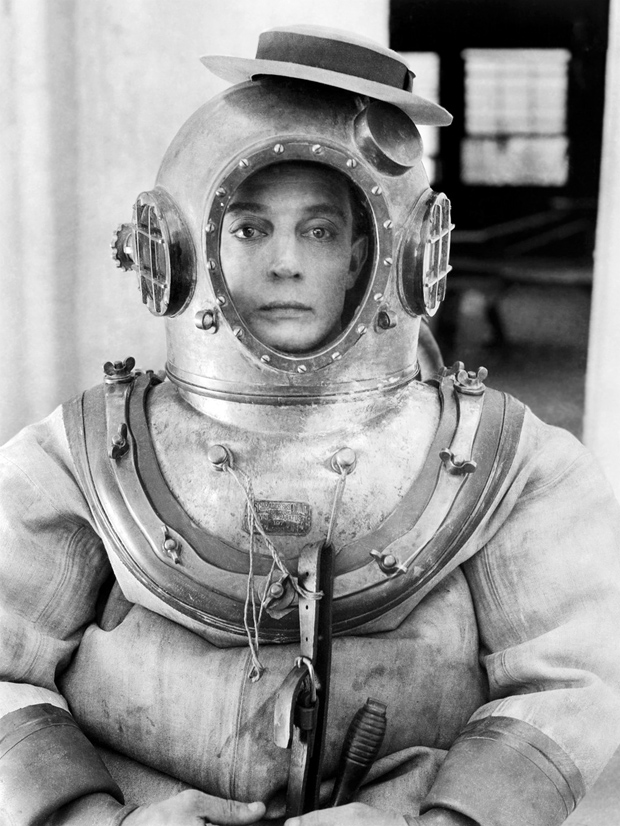
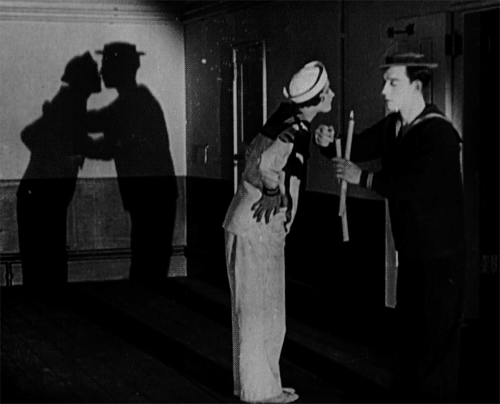

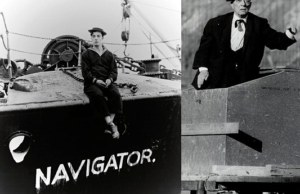
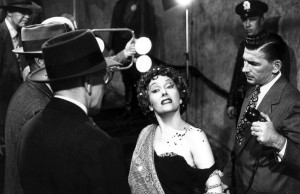
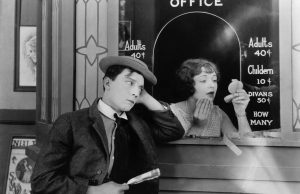






Leave a Reply